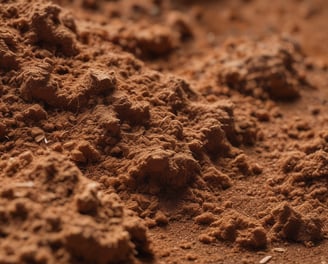Cocopeat Quality Guide
Discover the essential tips to identify high-quality cocopeat. A complete guide for gardeners and growers to ensure optimal plant growth and soil health.
1/15/20252 min read
What Is Cocopeat?
Cocopeat, also known as coir pith or coir dust, is a byproduct extracted from the husk of coconuts after the fiber has been removed. It is revered among gardeners and growers for its excellent water retention, aeration, and relatively neutral pH—properties that support healthy plant growth.


Key Factors to Check
Color and Texture
Color: High-quality cocopeat typically has a light to medium brown color. If it appears too dark, it may indicate older material or the presence of contaminants.
Texture: It should feel slightly spongy and crumbly when dry. Avoid cocopeat that appears too fibrous or compacted, as this may negatively affect drainage and aeration.
Moisture Content
Good-quality cocopeat is generally sold in dried and compressed form. This lowers the risk of mold, pests, and bacterial growth during storage and transportation.
When rehydrated, quality cocopeat will expand quickly and evenly. Low-grade cocopeat may contain large lumps that do not break down easily.
pH Level
The ideal pH range for cocopeat is between 5.5 and 6.5—slightly acidic to neutral. Most reputable brands will list the pH on the packaging.
A balanced pH helps in better nutrient absorption, promoting healthy and robust plant growth.
Electrical Conductivity (EC)
Why It Matters: EC indicates the salt content in the medium. Excess salt can harm plant roots, especially for sensitive species.
Look for cocopeat labeled “low EC” (often below 0.5 mS/cm). A lower EC ensures fewer dissolved salts and a safer growing medium.
Cleanliness and Purity
Contaminants: Ensure there are no large pieces of coir fiber, plastic bits, or other residues. Impurities can attract pests, restrict root growth, and reduce overall quality.
Scent: Good cocopeat should have an earthy, natural smell. Any foul or chemical odor indicates potential contamination.
Brand Reputation and Certifications
Buy from trusted brands or suppliers who specialize in organic or sustainably sourced cocopeat.
Look for certifications or transparent testing data on pH, EC, and handling processes.
Testing at Home
Expansion Test
Soak a small compressed brick in water. Wait 15–20 minutes to see if it expands sufficiently without clumping.
Drainage and Water Retention Check
After expansion, gently squeeze out excess water. Observe if it retains moisture without becoming overly soggy.
Visual and Tactile Inspection
Ensure the rehydrated cocopeat breaks apart easily with your fingers and does not contain lumps or foreign matter.
Conclusion
Cocopeat is an excellent growing medium, but quality can vary widely. By checking factors like color, texture, moisture content, pH, and electrical conductivity, you can select the best cocopeat for your plants. Investing a little time in assessing your cocopeat before use ensures lush, healthy growth—and peace of mind for you.
Pro Tip: Store your cocopeat in a dry, cool place, away from direct sunlight. Keep it sealed in its original packaging or in an airtight container to prevent contamination and maintain its quality for future use.
